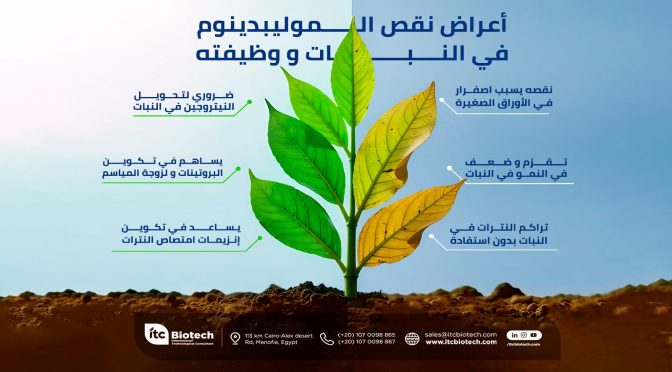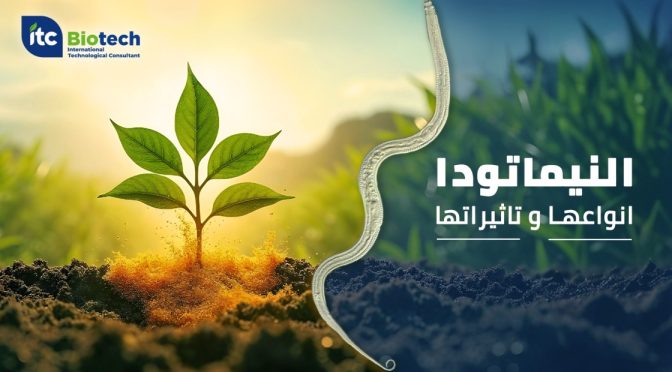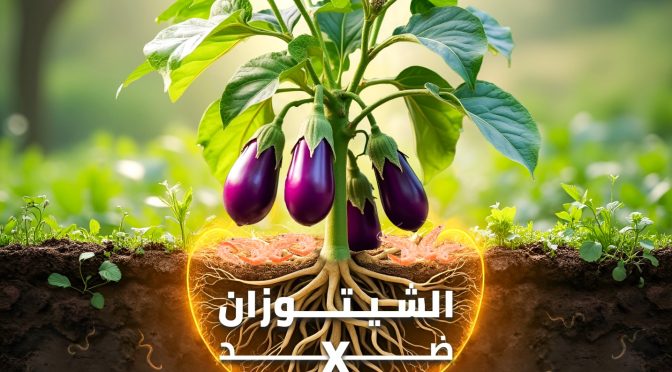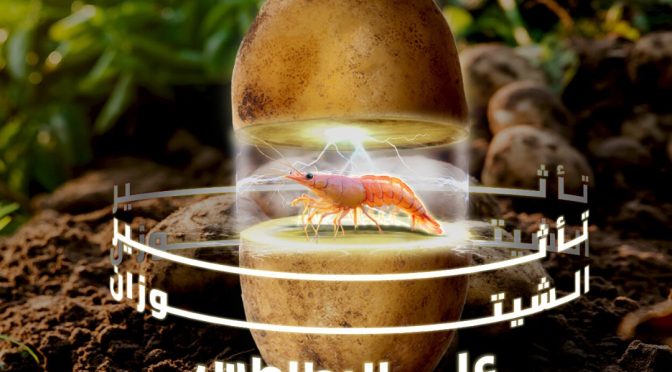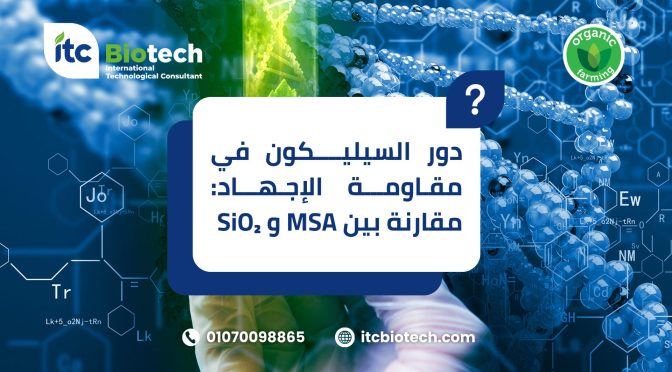Sorry, this entry is only available in العربية.
All posts by ITCbiotech
(العربية) علاج النيماتودا طبيعيا
(العربية) اهمية الطحالب البحرية للنبات
(العربية) كيفية زراعة العنب لتصديره: المراحل، وأفضل طرق الزراعة و 7أنواع لتصدير
(العربية) استخدامات الشيتوزان الزراعية: بين تعزيز النمو وحماية المحاصيل
(العربية) ما هي النيماتودا؟ أنواعها وتأثيرها على النباتات
(العربية) إمكانية استخدام الشيتوزان بمفرده وبالاشتراك مع المخلفات الزراعية ضد نيماتودا العقد الجذرية Meloidogyne incognita التي تصيب الباذنجان
(العربية) تأثير الشيتوزان الزراعي على مكافحة أمراض البطاطس التي يسببها فطر الفيوزاريوم.
Antifungal Activity of Chitosan Against Fusarium Based on Laboratory and Field Tests
In the laboratory experiment, chitosan significantly reduced the mycelial growth of Fusarium oxysporum, Fusarium sambucinum, and Fusarium graminearum by 88.4%, 89.0%, and 89.8%, respectively.
In the field experiment, treating potato plants with chitosan two weeks after planting the tubers, followed by inoculation with Fusarium a week later, reduced the severity of dry rot caused by Fusarium oxysporum and Fusarium sambucinum by 60.0% and 48.2%, respectively.
When tested as a plant treatment, potato plants treated with chitosan and inoculated with Fusarium showed a 33.5%–45.3% reduction in wilting severity compared to plants inoculated with Fusarium but not treated with chitosan.
Chitosan treatment enhanced the activity of phenolic compounds and defense-related enzymes such as peroxidase and polyphenol oxidase in potato tubers inoculated with Fusarium species.
The results clearly indicate that chitosan can be used as an alternative to chemical fungicides for controlling dry rot and Fusarium wilt by stimulating the plant defense system.
Source:
Mejdoub‐Trabelsi B, Touihri S, Ammar N, Riahi A, Daami‐Remadi M. (2019).
“Effect of chitosan for the control of potato diseases caused by Fusarium species.”
J Phytopathol.;00:1–10.
Enhancing Plant Resilience: MSA vs. SiO₂ in Agriculture
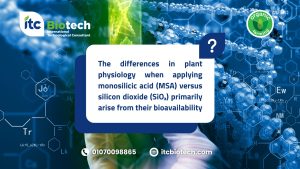
The differences in plant physiology when applying monosilicic acid (MSA) versus silicon dioxide (SiO₂) primarily arise from their bioavailability, absorption mechanisms, and systemic effects on plants. Here’s a breakdown:
1. Bioavailability
• Monosilicic Acid (MSA):
- MSA provides silicon in its most bioavailable form: H₄SiO₄ (soluble silica).
- Plants can directly absorb monosilicic acid through their roots or leaves without further conversion.
- This allows for immediate uptake and faster systemic effects.
• Silicon Dioxide (SiO₂):
- SiO₂ is an insoluble and crystalline form of silicon.
- For plants to utilize SiO₂, it must undergo slow dissolution into H₄SiO₄ in the soil or solution.
- This process depends on environmental factors such as soil pH, moisture, and microbial activity, leading to delayed availability.
2. Absorption and Transport
• MSA:
- Rapidly absorbed and transported through the plant’s xylem.
- Promotes uniform silicon distribution in plant tissues, enhancing systemic effects.
• SiO₂:
- Limited immediate absorption because it must first dissolve into H₄SiO₄, which occurs at a slow rate.
- Often remains localized in the soil and is less efficient in supplying silicon to plants within a short timeframe.
3. Effects on Plant Physiology
• MSA:
- Stress Resistance: Faster integration into cell walls as silica (SiO₂), enhancing structural strength and resilience against pests, diseases, drought, and salinity.
- Growth Promotion: More direct influence on stress-related signaling pathways, improving photosynthesis and stress tolerance.
- Nutrient Interactions: MSA does not interfere with other nutrients, ensuring optimal uptake.
• SiO₂:
- Long-Term Benefits: Acts as a slow-release source of silicon, beneficial for maintaining soil silicon levels over time.
- Localized Effects: Contributes to improving soil structure and microbial activity but provides less immediate physiological benefits to the plant.
4. Practical Applications
• MSA:
- Best for crops requiring rapid stress mitigation, such as during drought, salinity, or pest attacks.
- Effective in hydroponics, foliar sprays, or soil applications for immediate silicon supplementation.
• SiO₂:
- More suitable as a long-term soil amendment to improve soil silicon levels over time.
- Commonly used in agricultural practices aimed at maintaining soil health rather than achieving immediate physiological benefits.
Summary
- MSA: Highly bioavailable, immediate effects, rapid absorption, and suitable for addressing acute stress or nutrient deficiencies in plants.
- SiO₂: Slow-release source, less bioavailable, and beneficial for long-term soil management rather than immediate plant uptake.
Choosing between them depends on the crop’s specific needs, environmental conditions, and the desired speed of physiological effects.
Mr. Ihab Sharaf
CEO
